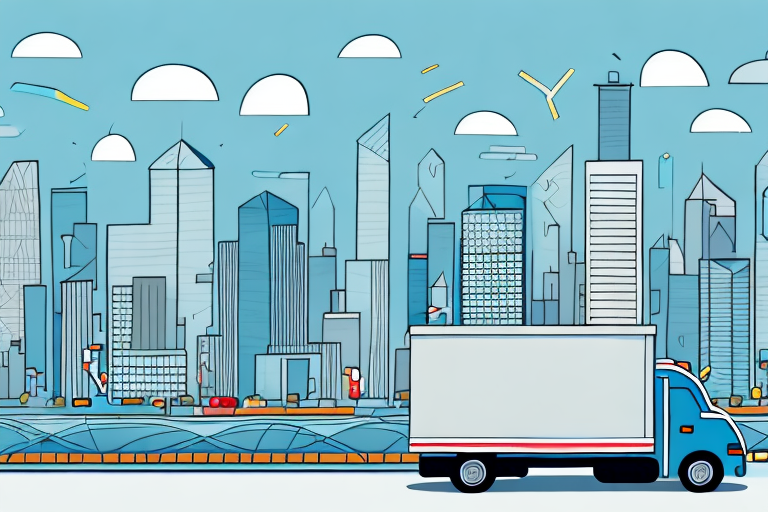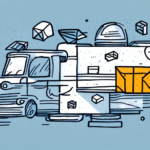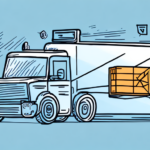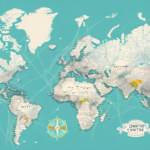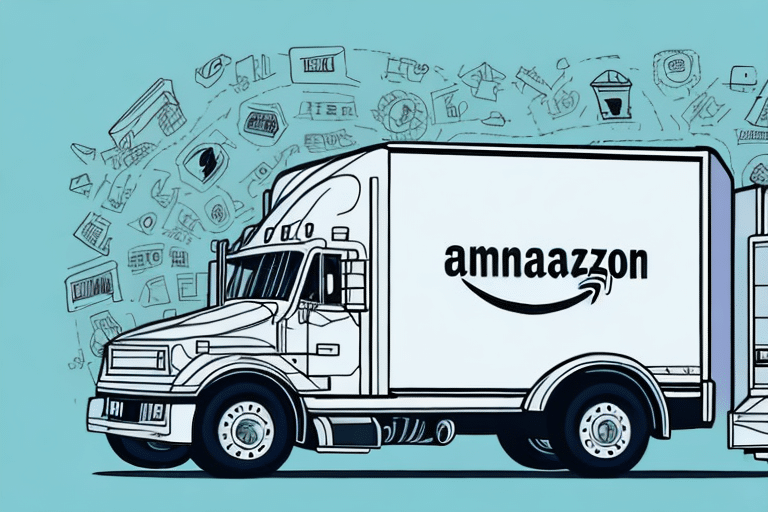The Growth of Delivery Services in the USA: A Brief Overview
Delivery services have been around for many years, from pizza delivery to courier services. However, it wasn't until the rise of e-commerce that delivery services truly took off. With the surge in online shopping, consumers began to demand faster and more cost-effective delivery options. This led to the emergence of major players like Amazon and Uber, who pioneered innovative methods of delivering goods and services. Today, the market for delivery services in the USA is valued at over $100 billion and continues to grow as new companies enter the market.
One of the biggest challenges facing the delivery industry is last-mile delivery—the final leg of the delivery process from the distribution center to the customer's doorstep. Last-mile delivery is often the most expensive and time-consuming part of the delivery process, particularly in urban areas with heavy traffic and limited parking. To address this challenge, many companies are exploring new technologies such as drones and autonomous vehicles, which have the potential to revolutionize the way goods are delivered.
Another significant trend in the delivery industry is the rise of eco-friendly delivery options. As consumers become more environmentally conscious, there is an increasing demand for delivery services that minimize their carbon footprint. This has led to the emergence of companies specializing in sustainable delivery, utilizing electric vehicles and other green technologies to reduce emissions and waste. As the demand for eco-friendly delivery options grows, more companies are likely to adopt sustainable practices in the coming years.
How Delivery Services Have Revolutionized the Way We Shop and Eat
Delivery services have transformed the way we shop and dine by offering greater convenience and flexibility. Instead of spending hours at the mall or grocery store, people can now order everything they need online and have it delivered the same day. This shift has led to a significant increase in online shopping, especially during peak periods such as Black Friday and Cyber Monday.
In the realm of food, delivery services like DoorDash and Grubhub have made it possible for individuals to enjoy their favorite meals from the comfort of their homes without visiting a restaurant. This convenience has reshaped consumer habits and expectations in the food industry.
Furthermore, delivery services have created new job opportunities for individuals seeking flexible work arrangements. Many delivery companies hire independent contractors who can work on their own schedules, allowing for better work-life balance. This model has been particularly beneficial for stay-at-home parents, students, and retirees who may not be able to commit to traditional 9-to-5 jobs.
Additionally, delivery services contribute to reducing carbon emissions and traffic congestion in urban areas. By consolidating multiple deliveries into single trips, delivery companies can optimize their routes and decrease the number of vehicles on the road. This not only lowers the environmental impact of transportation but also alleviates traffic congestion, making urban areas more navigable.
Fast, Convenient, and Cost-Effective: The Advantages of Delivery Services
One of the primary advantages of delivery services is their speed and convenience. Instead of traveling to a store or restaurant, consumers can simply order what they need and have it delivered directly to their doorstep. This saves time and energy, making it easier to obtain products when they are needed. Additionally, delivery services can be more cost-effective than traditional shopping options, especially when considering the time and money saved from traveling.
Delivery services also expand access to a wider range of products. With online shopping and delivery options, consumers can order products from all over the world without leaving their homes. This increases the availability of specialty items that may not be accessible locally.
Moreover, delivery services offer features like real-time tracking, allowing consumers to monitor their deliveries and plan their day accordingly. Many services also provide flexible delivery times, enabling customers to choose delivery windows that best fit their schedules.
From Groceries to Gadgets: The Wide Range of Products You Can Get Delivered
Delivery services offer a diverse array of products, ranging from groceries and household items to electronics and gadgets. This versatility ensures that consumers can obtain nearly anything they need delivered straight to their homes. For individuals living in remote areas or those with limited access to stores or restaurants, delivery services eliminate location as a constraint, providing access to essential and specialty items alike.
The COVID-19 pandemic further popularized delivery services, as people were encouraged to stay home and minimize trips outside to reduce virus exposure. Many businesses adapted by enhancing their delivery offerings, ensuring they could continue to serve customers safely and conveniently. With a few clicks, consumers can order their favorite products and have them delivered without compromising their safety.
Same-Day Delivery vs. Standard Delivery: Which One Is Right for You?
Delivery services typically offer options between same-day delivery and standard delivery. Same-day delivery provides faster service but usually comes at a higher cost, making it suitable for urgent needs. On the other hand, standard delivery is slower but more economical, making it a better fit for non-urgent purchases.
The choice between same-day and standard delivery depends on individual priorities and needs. For consumers requiring immediate access to products, same-day delivery is advantageous despite the additional cost. Conversely, for those looking to save on shipping costs and not needing items immediately, standard delivery offers a more budget-friendly option.
Additionally, some retailers offer free standard delivery for orders exceeding a specific amount, providing customers with opportunities to save on shipping fees by meeting purchase thresholds.
Subscription-Based Delivery Services: Are They Worth It?
Many delivery services now offer subscription-based models, where customers pay a monthly or annual fee for unlimited deliveries. This can be a cost-effective option for frequent users, providing savings compared to per-delivery charges. However, it’s essential to evaluate whether such services align with individual usage patterns and needs.
If you regularly order products and value the convenience of unlimited deliveries, a subscription-based service may be a worthwhile investment. Conversely, infrequent users might find the subscription fees outweigh the benefits.
The type of products typically ordered is also a consideration. Subscription services are often more advantageous for non-perishable items that can be stored easily. For perishable items like groceries or meal kits, consumers might prefer services that offer more flexible delivery scheduling and options to accommodate their needs.
Before committing to a subscription-based delivery service, it’s wise to research and compare different providers. Assess factors such as delivery speed, customer service quality, and any additional fees to ensure you choose the best option for your requirements.
The Role of Technology in the Evolution of Delivery Services
Technology has been a driving force in the evolution of delivery services, enabling faster and more efficient delivery methods. Innovations such as drones and self-driving cars are being explored to enhance delivery speed and reduce costs. Additionally, real-time tracking systems and automated notifications have improved transparency and customer satisfaction by allowing consumers to monitor their deliveries in real-time.
Furthermore, technology has facilitated the growth of the gig economy within the delivery sector, providing new opportunities for individuals to earn income through flexible delivery roles. These technological advancements continue to push the boundaries of what delivery services can offer, shaping the future of the industry.
How Delivery Services Are Changing the Retail Industry
The rise of delivery services has significantly impacted the retail industry, particularly traditional brick-and-mortar stores. As more consumers embrace online shopping and delivery options, retail stores have had to adapt to remain competitive. Many have integrated online ordering and delivery services to complement their physical presence, offering customers multiple avenues to purchase products.
Moreover, some retail stores are leveraging delivery services to extend their reach beyond their physical locations, tapping into broader markets and enhancing their online presence. This integration of delivery services into retail strategies has allowed stores to maintain relevance in an increasingly digital marketplace.
The Impact of COVID-19 on the Demand for Delivery Services in the USA
The COVID-19 pandemic has dramatically increased the demand for delivery services in the USA. With lockdowns and social distancing measures in place, consumers turned to delivery services as a safer alternative to in-person shopping. This surge in demand was particularly evident in sectors such as groceries and essential household items.
As a result, many businesses accelerated the adoption of new delivery models, including contactless delivery and curbside pickup, to accommodate customer preferences and safety concerns. The pandemic not only amplified the importance of delivery services but also fostered innovation and expansion within the industry.
Environmental Concerns and Sustainability of Delivery Services
While delivery services offer numerous benefits, they also raise environmental concerns. The reliance on delivery vehicles can contribute to air pollution and greenhouse gas emissions, exacerbating climate change issues. Additionally, the increase in packaging waste generated by deliveries poses significant environmental challenges.
In response, some delivery companies are taking proactive steps to address these concerns. Initiatives include adopting electric and hybrid vehicles to reduce emissions, optimizing delivery routes to minimize fuel consumption, and using sustainable packaging materials to decrease waste. These efforts reflect a growing commitment to sustainability within the delivery industry, aligning with consumer demand for environmentally responsible practices.
The Future of Delivery Services: Trends to Watch Out For
The future of delivery services is poised for continued growth and innovation. Emerging trends to watch include the increased use of automation and robotics, such as drones and autonomous delivery vehicles, which promise to enhance delivery efficiency and reduce costs. Additionally, on-demand delivery models are expected to expand, offering even greater flexibility to consumers.
Integration with e-commerce platforms is also likely to deepen, creating seamless shopping and delivery experiences. Furthermore, sustainability will remain a critical focus, with ongoing advancements in green technologies and eco-friendly delivery practices shaping the industry's trajectory.
In conclusion, delivery services provide numerous advantages, including greater convenience, cost-effectiveness, and access to a wide range of products. Despite challenges such as environmental impact and competition with traditional retail, delivery services are set to continue evolving, driven by technological advancements and shifting consumer preferences. As these services advance, they will play an increasingly integral role in the way Americans shop and live.













